Mr. Moody and the Warroad Townsite Company
Preparations for a land boom, boosterism, and the sale of Naymaypoke's land
On a Saturday in January of 1897, Mr. Charles A. Moody left by stagecoach with three other gentlemen from Roseau, Minnesota, to assess opportunities on unceded Red Lake Reservation lands which had been recently annexed into the county. They returned from Warroad the following Monday with big plans.
Two months later Mr. Moody submitted a request to the general revenue fund of Roseau County for $5,000 to build the 22-mile road to Warroad. I discovered in reading the legislative records for 1895, that the State of Minnesota had set aside funds to reimburse counties for building roads. Construction commenced as soon as weather permitted.
By July, Moody had sold his Roseau property and moved his family to Warroad where he became proprietor of the Hotel Moody.
Three other Roseau families also left for Warroad that spring, according to the compilation of early settler accounts in Pioneers! O Pioneers: A History of Early Settlers in Roseau County, 1885-1910. More newcomers arrived throughout the summer by steamboat and stagecoach, ox-cart and wagon.
Miss Florence Dowsland of Sauk Rapids, a sister of Mrs. Selena Moody, came by stagecoach to visit Lake of the Woods in early September of 1897 and decided to stay and teach school in Warroad. Three of Selena Moody’s sisters would come to live there the following year, along with their parents.
Mr. Moody had also invited Minnesota’s Secretary of State, Albert Berg, to visit Lake of the Woods as his guest and gave him a glimpse of the good life to be had there.
Berg jumped on Moody’s bandwagon. Access to the Hudson Bay, a straight line for a railroad to Winnipeg, great fishing and all that timber might have had something to do with Berg’s enthusiasm. He moved his family from Chisago City to invest in Moody’s vision for Warroad.
On November 4, 1897, Mr. Moody returned from a trip to Canada by steamboat from Kenora and the next day the Roseau Region published a muckraking story about his trip.
“Big Scheme Exploded” read the headline. Republican State Senator C. B. Buckman denied any connection to Mr. Charles A. Moody. Moody had claimed the Minnesota & Winnipeg Lumber Company with $5 million in capital had been established with Buckman and Albert Berg as Vice President and himself as manager. Moody promised to build large timber mills in Winnipeg and drive logs from Lake of the Woods via a canal to be dug between Warroad and the Roseau River.
No such canal was ever built, but it shows the size of Moody’s dreams and the frequent use of exaggeration and political connections in his business affairs.
In October of 1898, the Roseau Region reported Mr. Moody went to the Crookston Land Patent Office and had been the first to stake a preemptive claim of 160 acres in the northern part of Red Lake Reservation — land in the center of the Ojibway village with river access.
The following June, Moody ran a notice in The Warroad Plaindealer announcing that after the Fourth of July, he would discontinue running the hotel because of his many other business interests.
William Mackenzie and Donald Mann received a federal charter for the Canadian Northern Railway in 1899. Mackenzie and Mann intended to extend their transcontinental railroad across the southern end of Lake of the Woods on the American side of the border. Charles Moody and Albert Berg successfully negotiated to bring the railroad to Warroad and build a depot.
In February of 1900, the Canadian Northern depot opened in Warroad and the town celebrated passenger rail service. As Customs Officer, Moody reported, his position gave him “commodious quarters on the north end of the depot.”
Allegations that Mr. Moody “sold Indian land” to Mackenzie and Mann for the railroad were published in the Roseau Region, but in The Warroad Plaindealer there was no mention made as to how the railroad acquired title to the land for the depot or railroad tracks. It is possible, given the location of the train depot, that the land sold to the Canadian Northern Railway had been in the tract reserved for Naymaypoke.
By the end of May 1900, Moody had cleared all the timber off 100 acres of his land and cut it into cord wood. He prepared for a land boom.
Townsite companies, incorporated by state governments, were created to locate, survey, plat, and build town sites and to buy, sell, and improve real estate. They constructed wagon roads, and operated water works, electric or gas plants. These incorporated entities protected the private assets of the managing partners and allowed the corporation to borrow against the land in order to develop it so it could be sold with a return on the investment.
The Warroad Townsite Company was established in 1900 with Albert Berg as President and Mr. Moody as Secretary. Mr. Berg kept busy as he completed the last year of his term as Minnesota’s Secretary of State and then served in the state legislature in 1901. Berg also became president of the new State Bank of Warroad.
The Warroad Townsite Company began by plotting out residential lots in a neighborhood they named Highland Park.
Warroad officially became a city in 1901 and the Warroad Townsite Company promised to deliver “the future metropolis of northern Minnesota.”
Promotional pamphlets published to entice new settlers to the area mentioned the good public schools, three organized churches, and a list of local establishments:
four hotels, four general stores, four saloons, two grocery and confectionary stores, two restaurants, two newspapers, two sawmills, two barber shops, two millinery stores, a bank, navigation company, grain elevator, cold storage plant, two livery stables, planing mill, photograph gallery, blacksmith shop, drug store and sanitarium (Book of Warroad, 1901).
In truth, the grain elevator had not yet been constructed and the Warroad Navigation Company was just an idea for a line of passenger steamships to serve the resorts on the lake with summer tourists. The Book of Warroad offered a prospectus for “a golden opportunity.” A second edition was printed and distributed in 1902.
When I think about what I’ve learned about Mr. Moody and the Warroad Townsite Company, I can’t help but think of Sinclair Lewis. The first American to receive a Nobel prize in literature, he satirized city boosters like Mr. Moody. In his novel, Main Street, set in 1910 in a small town in Minnesota like the one where he grew up, Lewis showed how land speculators made extravagant promises and inflated real estate prices. The titular character in Lewis’ novel, Babbitt, has many similarities to the real-life Mr. Moody in his real estate dealings, city boosterism, and conformity to white middle-class social conventions.
Mr. Moody described himself elsewhere in the booklet as a “U.S. Commissioner located at Warroad at whose office all business necessary in acquiring a homestead may be transacted.” Moody set himself up as a one-stop shop for new arrivals. This land would not officially be open to homestead claims until 1902, yet Moody inaugurated a land boom.
Between 1900 and 1910, the population of Warroad grew from 238 to 927 residents. The new city largely displaced the old Ojibway village. Some Indian villagers camped on lands reserved for Kakaygeesick and Naymaypoke. Others relocated to the islands, the Northwest Angle or Buffalo Point First Nation.
Chief Naymaypoke was 74 years old in June of 1914 when news of the “sale of Indian land” appeared in the Warroad Plaindealer. “Walter F. Dickens, Indian agent at Red Lake, was in the city from Saturday to Tuesday and conducted the sale…” of land in Naymaypoke’s allotment which the Warroad Townsite Company had long ago divided up into lots and sold to white settlers.
The historical record shows Mr. Christian C. Strander of Crookston officially made the purchase of Naymaypoke’s two tracts along the river — including Highland Park — for $7,400. Mr. Strander was a well-known and prestigious name in the state for his real estate and abstracting business.
Only one bid — Strander’s — was submitted for Naymaypoke’s tracts of land and the reporter noted the amount to be significantly higher than current market value. It appears the Warroad Townsite Company cleared their lot deeds with Mr. Strander negotiating on their behalf with Red Lake to settle for reserve land taken.
Naymaypoke retained the north 40 acres of his land and about seven acres of the riverbank which had been reserved for a house.
Mr. Dickens, the Indian agent, told The Warroad Plaindealer that the government agreed to build a good house for the chief and pay him the rest of his money in monthly installments, so as to make him comfortable as long as he may live.
He moved into the new house in 1915. Naymaypoke died in 1916.

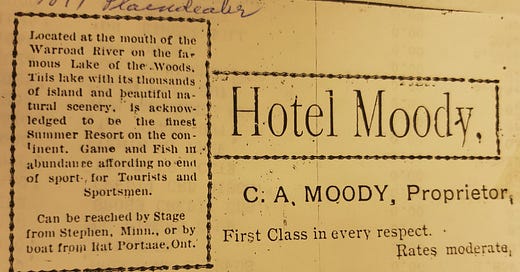



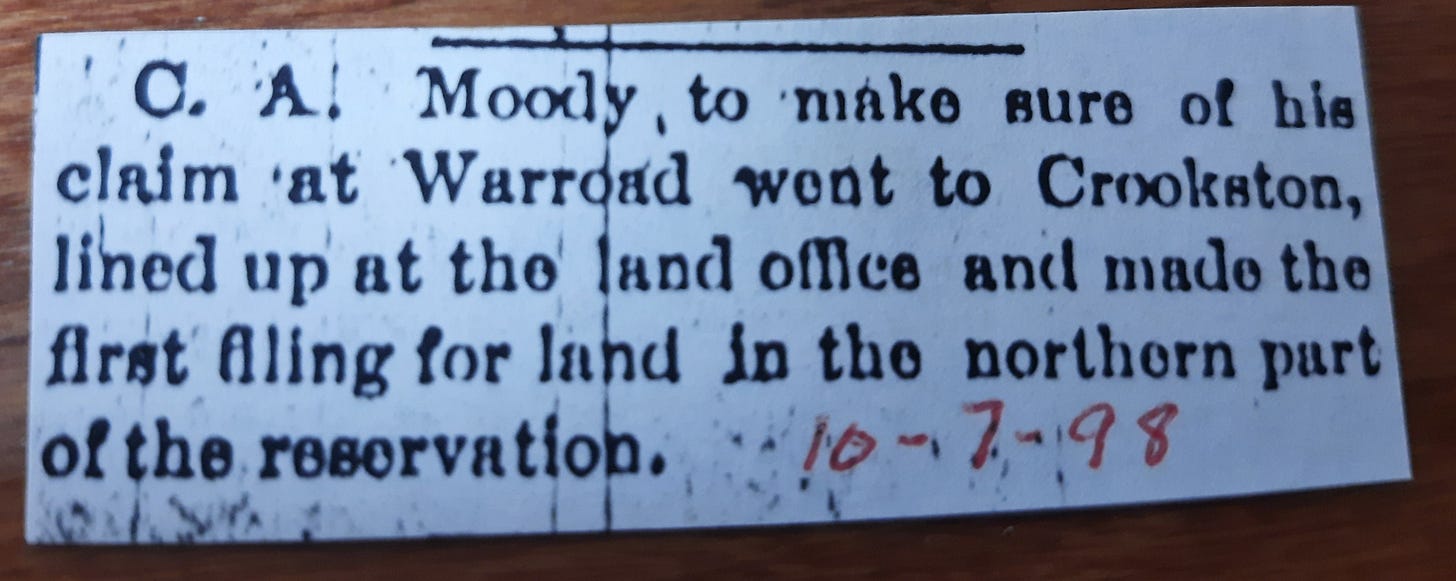
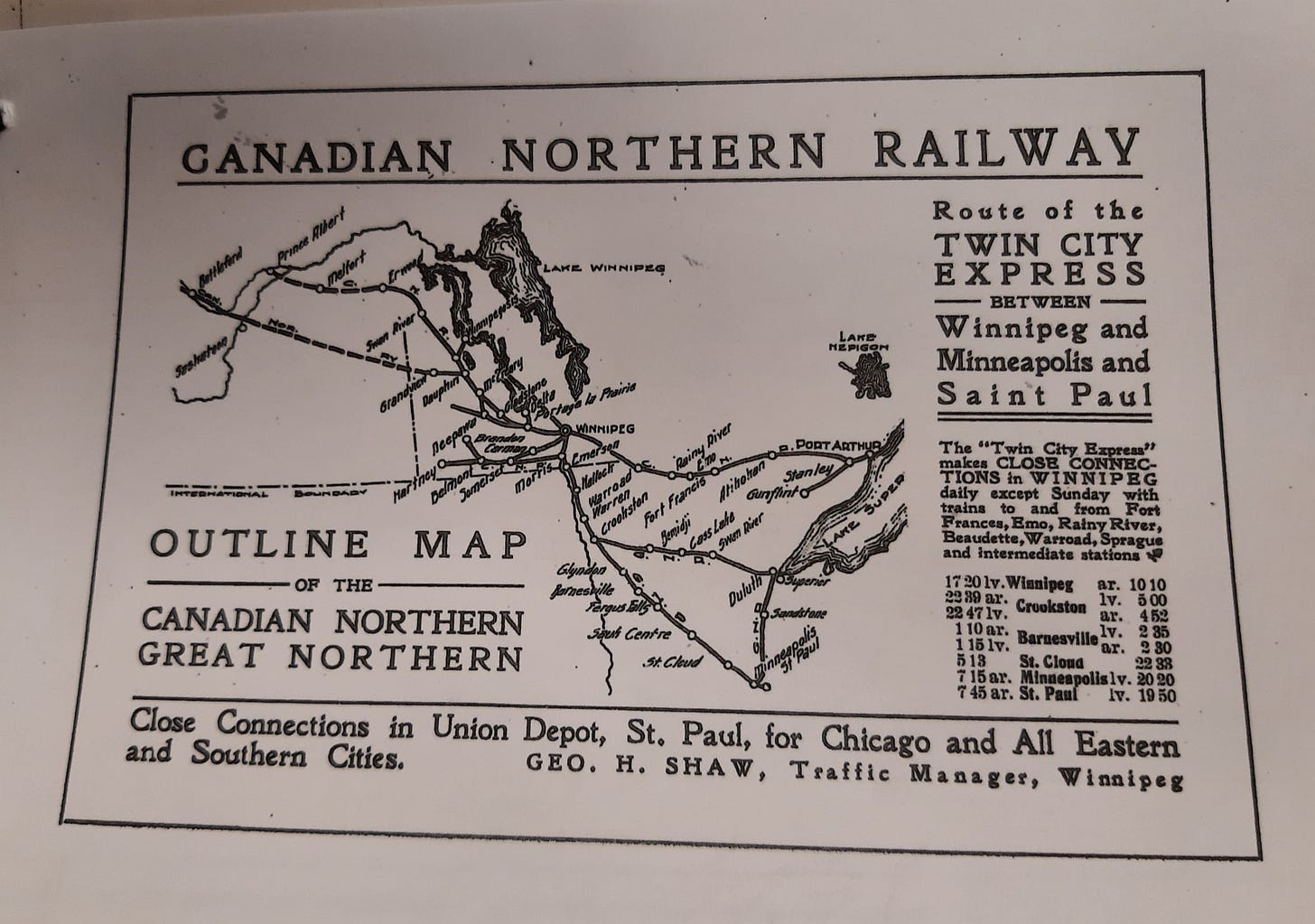

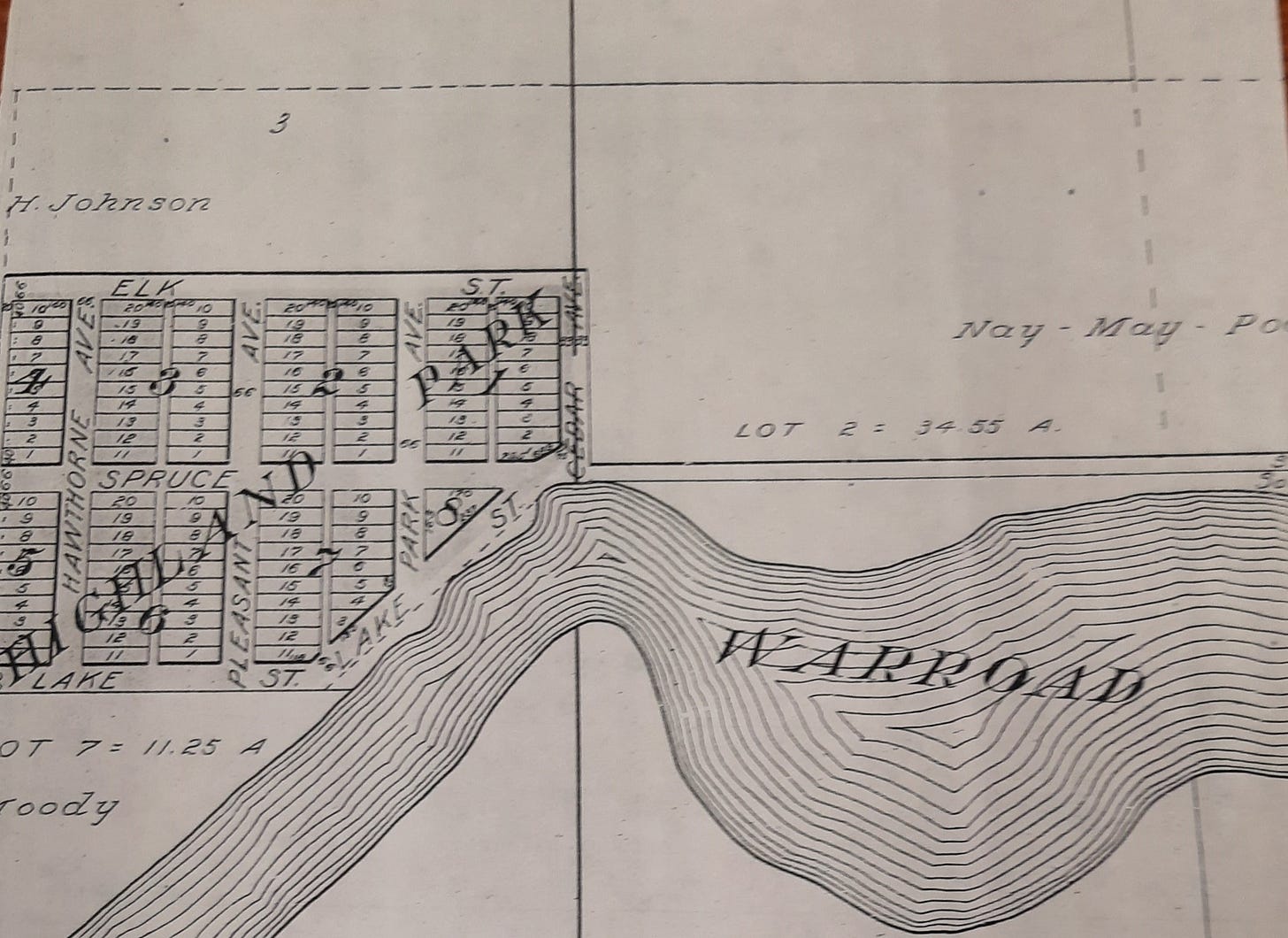
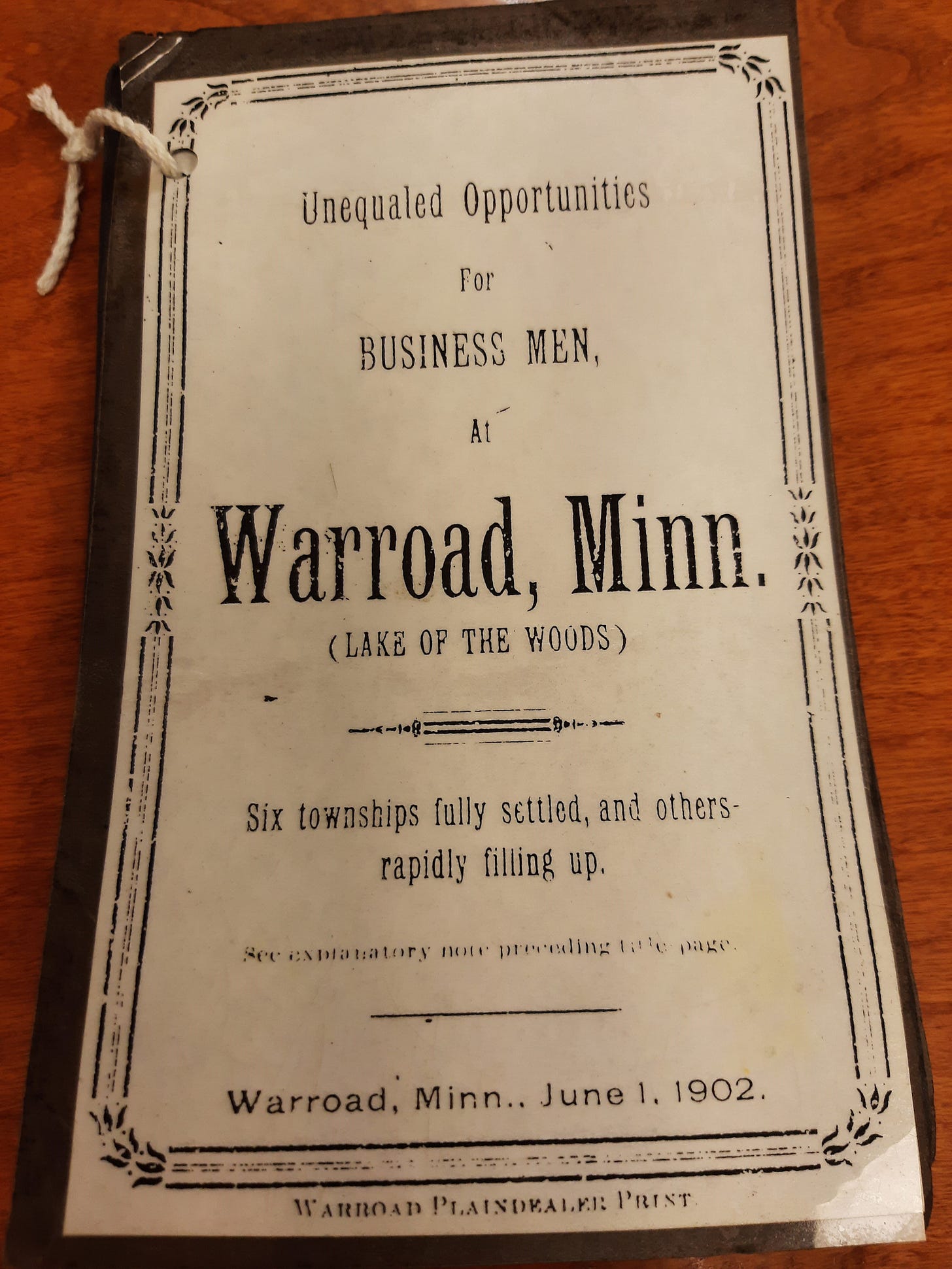
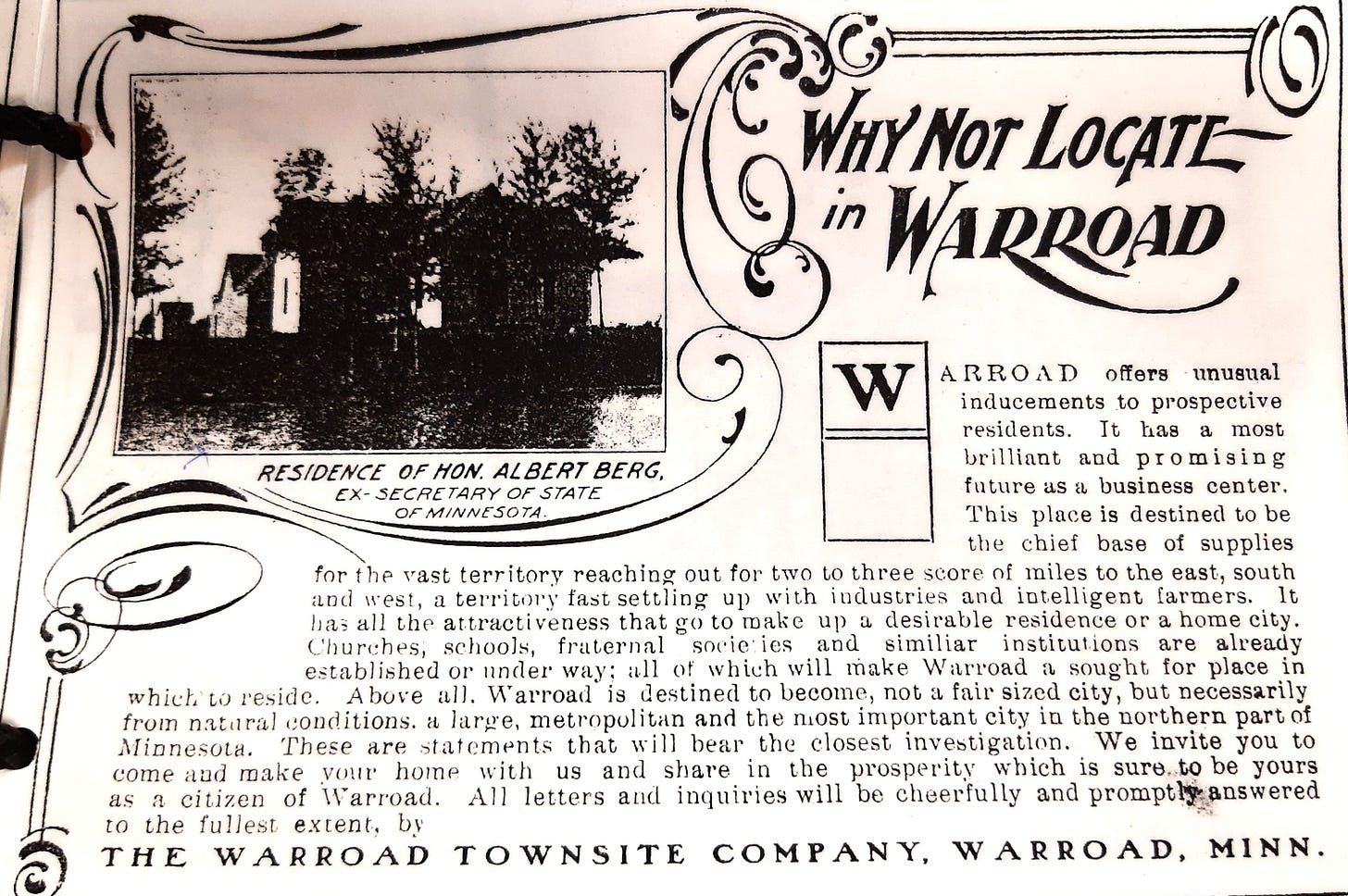
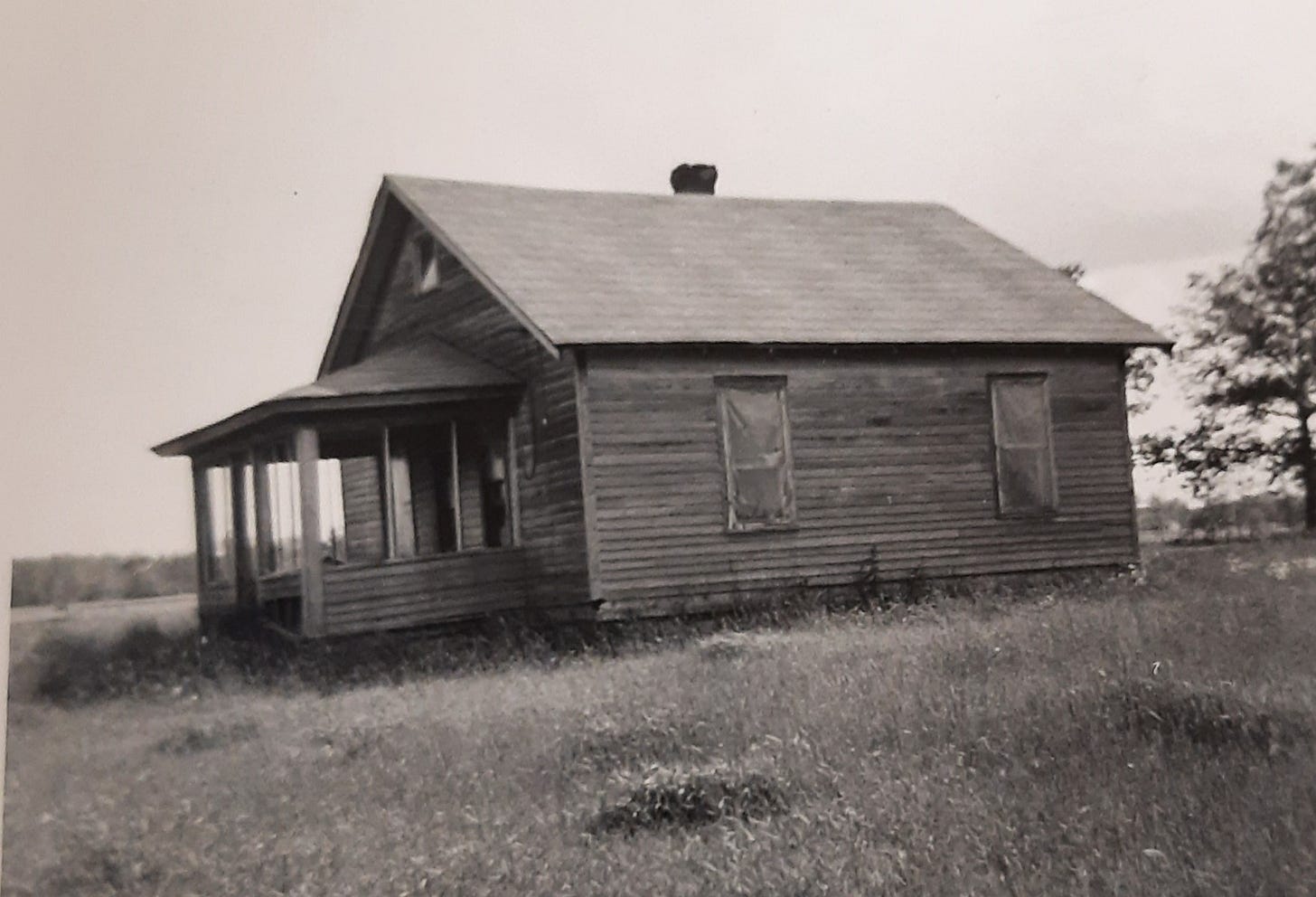
I know I've mentioned this before, but it's so interesting (and distressing!) to see these early examples of the same thing that's going on now in America. The reference to Babbitt seems indeed apt - "frequent use of exaggeration and political connections in business affairs," etc.. In a way, although you don't connect it to current events in these posts, l feel like you are doing something similar to Heather Cox Richardson - looking at history and showing how we got to where we are today.
The saga continues! Thanks, Jill. I agree that there are definite shades of Heather Cox Richardson here! It's made even more compelling by the hyperlocal setting. "It can't happen here"...but it DID and the extractive economy is still driving injustices today!